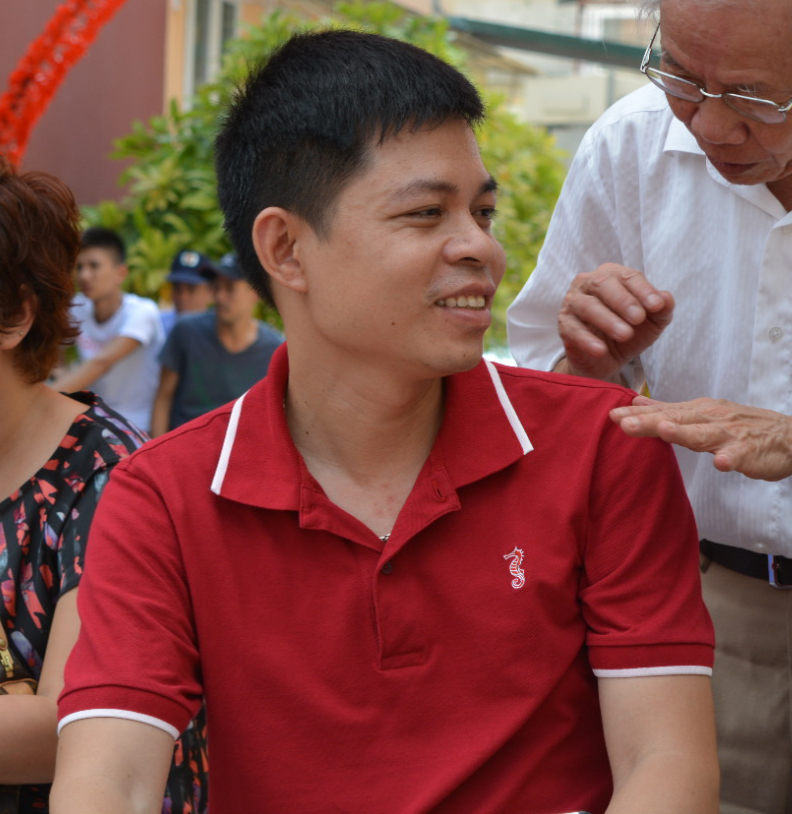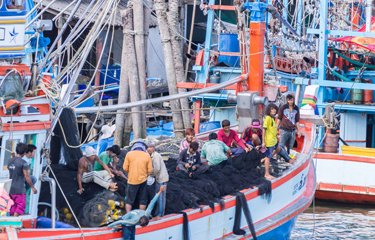Simple technical upgrades on fishing vessels in Thailand implemented in a case study have helped reduce pressure on the fishing labor market, a new report from the International Labor Organization (ILO) showed.
The upgrades resulted in improvements in the working and living conditions of fishers on vessels, and may result in increased fishing yields and earnings, according to the report, “Less is More: How Policy and Technology can Impact the Thai Labour Market for Work in Fishing.”
To help address the labor abuse and other unaccepted forms of work in Thailand’s fishing industry, ILO, in collaboration with Thai government agencies and social partners, undertook the three-year project “Ship to Shore Rights,” which ended in July 2019. The project was funded by the European Union and covered 22 coastal provinces in Thailand.
As part of the project, a case study was carried out by Thailand’s Department of Fisheries, the Training Department of Southeast Asian Fisheries Development Center (SEAFDEC), and the Pattani Fishery Association in southern Thailand in 2018-2019 to design a more labor-efficient purse-seiner, which normally requires heavy labor on board.
The comprehensive reconfiguration on the vessel in Pattani cost a total of THB 1.75 million (USD 57,790, EUR 52,150) and included a central cooling system, refrigerating system, and a core reconfiguration including a crane, power block, and hydraulic system.
“Since the installation of the new equipment in early 2019, the purse-seiner has seen an approximate 37 percent reduction in labor required,” the report said.
The number of personnel needed on board was reduced from 27 to 17, while the average time for hauling fishing nets was less than an hour-and-a-half, down from more than two hours before the reconfiguration.
Living and working room for fishers improved as the number of men on board decreased. Turnover of fishers fell from 30 percent per year to nearly zero because the hard work of hauling in fishing nets was done largely by the power block system. This means the owner did not need to spend as much time recruiting and training new workers. The fishers also no longer worked in crowded spaces, as the work area on-board was significantly increased after the reconfiguration.
The central cooling and refrigeration systems were proven to improve the quality of the catch, as fish caught in the first few days at sea, which typically lose value as they deteriorate, were reduced from 34 percent down to around 10 percent of the total catch. This means that 90 percent of its catch could be sold at the full market price (up from 70 to 80 percent prior to the installations), increasing revenue by roughly 10 percent on average per trip.
Operating costs were reduced by eight percent in the second year after reconfiguration, and net profits increased by up to 59 percent. At this rate, a THB 2 million (USD 66,050, EUR 59,605) investment could be recouped in less than 18 months.
SEAFDEC also estimates that the resale value of the boat after the reconfiguration is about THB 10 million (USD 330,252, EUR 298,024), an increase of two-thirds from its THB 6 million to THB 7 million (USD 198,151 to USD 231,176, EUR 178,814 to USD 208,617) value before the changes. That adds up to a rapid return on investment and win-win results for employers, workers, and the Thai government.
Given the positive outcomes from the reconfiguration, the Thai government, European Union, and ILO should explore possible partners to support a lending facility, the ILO report recommended.
ILO Director for Thailand, Cambodia and Lao People’s Democratic Republic, Graeme Buckley, said a relatively small investment could result in a major impact in Thailand’s fishing industry.
“A program of loan guarantees to support lending for purse-seiner reconfigurations could help reduce the risk for Thai banks. A loan guarantee program that supports USD 5 million [EUR 4.5 million] in lending, for example, could help reconfigure 80 to 100 vessels (of Thailand’s roughly 900 large purse-seiners) in a two-year cycle,” Buckley said.
The lending program would have to include independent verification of the borrowers’ compliance with Thai law and the ILO’s core labor standards, but the program could be a net benefit for all involved, Buckley said.
“Some Thai vessels and ports have chronic wage payment problems that, until ended and verified, would prevent them from joining a lending program,” Buckley said.
Photo courtesy of Bumbim Pensinee/Shutterstock







